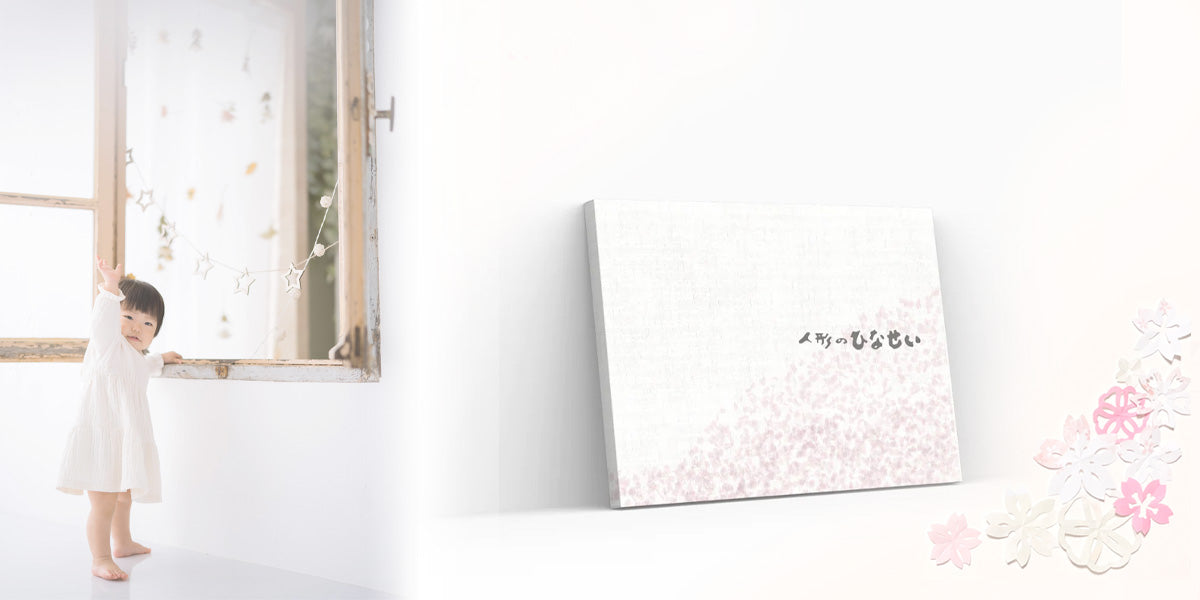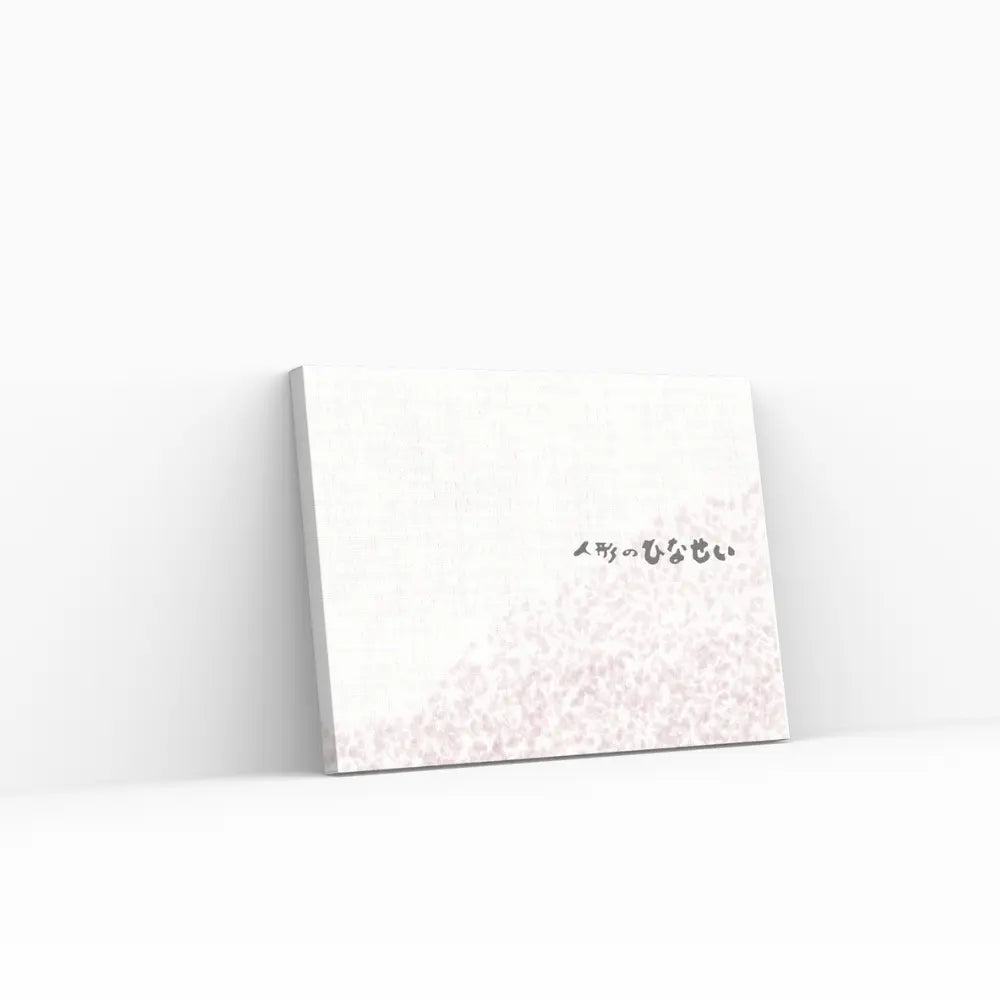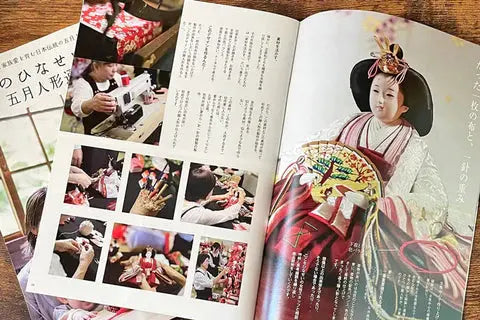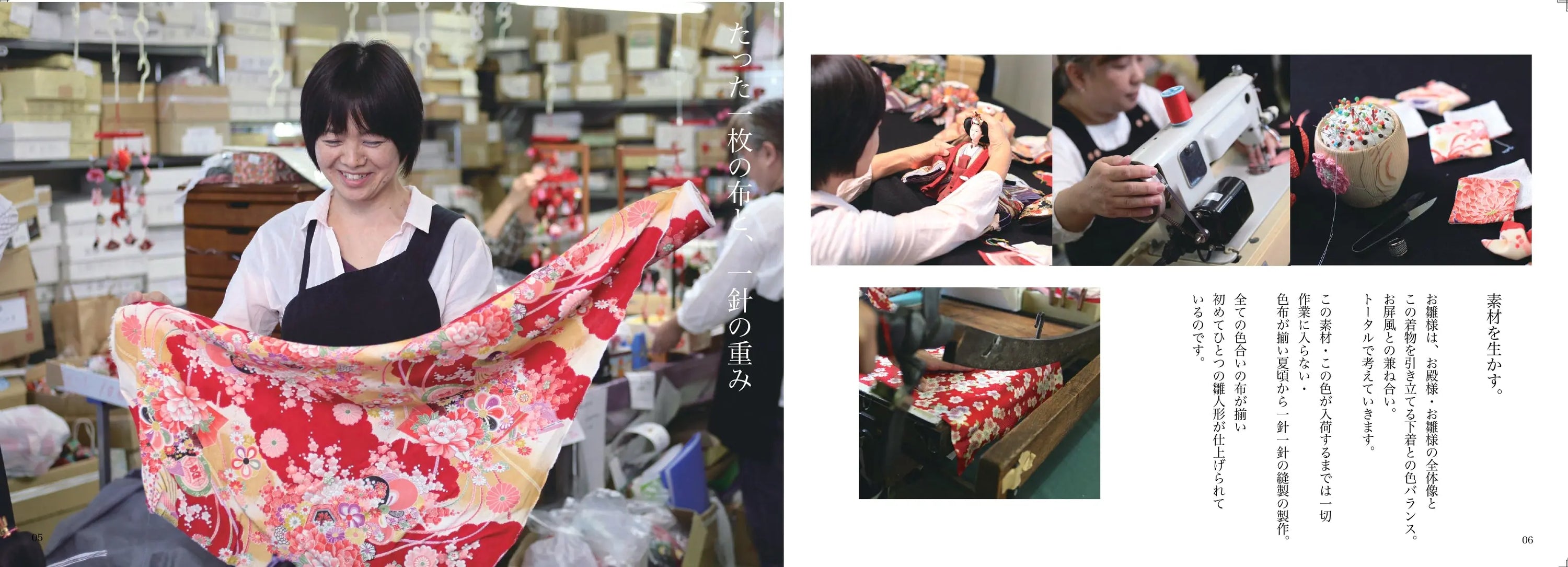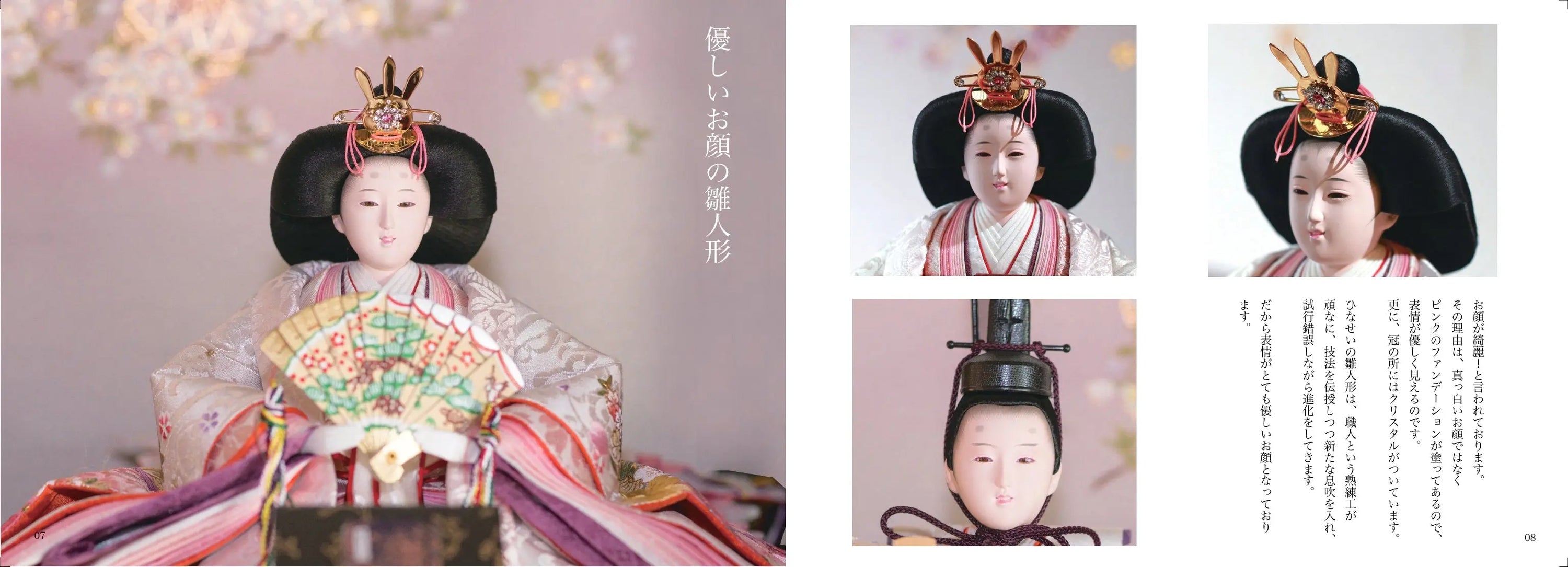The meaning of the "Girl's Festival Song": Introducing its heartwarming lyrics
As Hinamatsuri (Girl's Day) on March 3rd approaches, you will hear Hinamatsuri songs in various situations.
It is also played in kindergartens, nurseries, shops, shopping malls, etc.
This is a very fun Hinamatsuri event for children.
We will explain the "Hinamatsuri song" that your children will naturally find themselves humming along to.

-Supporting Hina dolls and family memories-
---- table of contents ----
Click below to jump
3. How can parents and children enjoy Hinamatsuri songs and sheet music together?
~Tips and examples for celebrating with your family | Hinamatsuri lyrics and songs~

1. A detailed explanation of the Hinamatsuri song and the meaning of the Doll's Festival!
Hinamatsuri is a traditional Japanese event held on March 3rd, known as the "Peach Festival," which prays for the healthy growth of girls.
An essential part of this festival is the beloved "Girl's Festival Song."
The most famous of these is the children's song "Ureshii Hinamatsuri (Happy Hinamatsuri)."
The opening lyrics, "Let's light the lanterns...", are the iconic melody of Hinamatsuri that can be heard all over Japan, and are also a cultural phrase that evokes the arrival of spring.
The lanterns and peach blossoms that appear in these lyrics are important symbols of Hinamatsuri, and the song depicts a scene of families gathering together to decorate the Hina dolls .
The lanterns represent light, and the peach blossoms are a symbol of warding off evil spirits and wishing for longevity.
These are deeply connected to the spring season in Japan and represent the warmth of family time spent together and the traditions that are passed down from generation to generation.
Hinamatsuri songs are not just a part of the celebration, but also play a role in creating precious moments of warm interaction within the home and watching over children's growth.
This song, which evokes cultural background and family ties, is deeply rooted in the Japanese heart.
2. Who wrote the lyrics and composed the music for "Ureshii Hinamatsuri"?

A simple and stylish display of Hina dolls [Kano Hina]
"Ureshii Hinamatsuri" was written in 1936 by Sato Hachirō and composed by Kawamura Koyo .
Hachiro Sato is known as a lyricist who wrote many children's songs and poems, and is known for using simple, warm words that children can enjoy singing.
This song also has lyrics that will resonate with children and beautifully expresses the joy and splendor of Hinamatsuri.
Composer Koyo Kawamura has also left behind many masterpieces in the world of Japanese children's songs. His compositional style is characterized by simple, familiar melodies , and "Ureshii Hinamatsuri" is one example of this.
The melody of this song evokes the warmth of spring and the beginning of a new season , and is familiar music that children can easily remember and sing.
The song "Ureshii Hinamatsuri," born from the collaboration between these two artists, has become a standard song for Hinamatsuri , and is now sung all over Japan every year around the time of Hinamatsuri on March 3rd.
This song gives children the opportunity to learn about traditional culture while having fun , and is beloved as a song that symbolizes family gatherings and warm moments.
Happy Hinamatsuri Lyrics:
Let's light up the lantern
Let's give flowers, peach blossoms
Five-person drummer with flute
Today is a fun Hinamatsuri
Emperor and Empress
The two of us stand side by side with a straight face
To my sister who got married
The white face of a similar court lady
The light reflected on the golden folding screen
The spring breeze gently shakes
A little white sake
The red-faced Minister of the Right
Change your kimono and tie your obi
Today I look bloated too
On this fine spring day
The most joyous of all is Hinamatsuri

3. How can parents and children enjoy Hinamatsuri songs and sheet music together?
Customize your Hinamatsuri. See all Hina dolls, tapestries, and flower decorations.
Hinamatsuri is an important traditional Japanese event that brings families together to celebrate.
"Ureshii Hinamatsuri" (Happy Hinamatsuri), which is sung at this time of year, is not just a song, but also plays an important role in deepening the bond between parents and children and as a means of conveying traditional culture .
Especially in households with young children, singing this song together as parents and children decorate the Hina dolls creates a time for the whole family to enjoy the festival.
To enjoy Hinamatsuri songs together as a family, it is effective to sing together using sheet music or play an instrument.
You can enjoy the fun of singing even more by practicing the melodies of Hinamatsuri songs with your children using easy-to-play instruments such as the piano or guitar.
Furthermore, by clapping along to the rhythm of the song or incorporating some simple dancing, children can actively participate , making parent-child time even more fulfilling.
Using sheet music also provides a good opportunity to learn musical fundamentals and develop a sense of rhythm and pitch.
For children who are interested in notes and rhythm , singing while looking at sheet music is a great way to deepen their understanding of music.
By preparing "Happy Hinamatsuri" with sheet music, the whole family can sing along and enjoy the traditional atmosphere of Hinamatsuri.
4. Children's songs for parents and children to sing together! Celebrate with the Hina dolls
On Hinamatsuri, it is traditional to display Hina dolls and enjoy the beautiful decorations with the whole family.
In households with girls in particular, mothers and grandmothers take the lead in carefully arranging the dolls one by one and preparing for the festival.
By singing "Happy Hinamatsuri" in the process, the scene of parents and children enjoying Hinamatsuri together is unfolding.
Hina dolls are made up of figures such as the Emperor and Empress, represented by the "O-Dairi-sama" and "Ohina-sama," as well as five musicians. By displaying these and singing, children can naturally learn the meaning of tradition .
Also, parents can talk to their children and ask them, "What does this doll symbolize?" This will help them become more familiar with the culture and history of Hinamatsuri.
This event is also a great opportunity for the whole family to spend time together.
In particular, by singing songs together as parents decorate the Hina dolls , children can experience the joy of the festival while also inheriting Japanese traditions.
Singing "Ureshii Hinamatsuri" in front of the Hina dolls will create a memorable Hinamatsuri for children and deepen family bonds.
5. Popular Hinamatsuri song in kindergarten! A song to learn about culture
Hinamatsuri is one of the events that children look forward to at kindergartens and nursery schools.
In particular, nursery rhymes such as "Ureshii Hinamatsuri" are widely loved as classic songs that children naturally hum along to.
Through this song, young children can learn about the culture and traditions of Hinamatsuri in a fun way.
The lyrics depict traditional Japanese family images and symbols of ceremonies , and are written in a way that is easy for children to understand, making them extremely useful for kindergarten education.
During this time, teachers are trying to help children become familiar with Japanese culture by incorporating not only "Ureshii Hinamatsuri" but also other spring nursery rhymes.
For example, songs celebrating the arrival of spring, such as "Sakura Sakura" and "Haru yo Koi" (Come Spring), are often sung together.
Singing helps develop a sense of rhythm and cooperation, while also allowing children to experience traditional Japanese events , which is a major educational benefit.
Songs are also a powerful tool for teaching the cultural background of Hinamatsuri.
By explaining the meaning behind the lyrics and the cultural background , children will naturally come to accept the history and traditional events more deeply.
Through Hinamatsuri songs, children can learn about the charm of Japanese events that celebrate family ties and the arrival of spring.

6. What is "Goninbayashi"? The hidden meaning behind the lyrics of the Hinamatsuri song
"Gonin Bayashi" is one of the important characters that appears in the lyrics of Hinamatsuri.
This word is also written as "Goninbayashi" and refers to five musicians.
The five musicians playing flutes and drums on the stage symbolize the excitement and splendor of Hinamatsuri, and add to the fun of the festival.
Their performance is visually engaging for children and a particularly memorable part of the lyrics.
"Gonin Bayashi" originally originated from the performance of gagaku and noh, but it appears in the lyrics for Hinamatsuri to create a joyful atmosphere .
The part of the lyrics that refers to the "five musicians playing flutes and drums" refers to the five musicians included in the Hina doll set, and they play an important role in adding color to the Hinamatsuri festival.
By singing these lyrics, children can also experience traditional Japanese musical culture.
Furthermore, the role of the Goninbayashi is not just decoration, but is also related to the history and cultural background of Hinamatsuri .
Since ancient times, musicians have played music to liven up ceremonies at important events in aristocratic and samurai societies.
This tradition has been carried on even in modern Hinamatsuri, with the meaning conveyed to children naturally through the lyrics.
7. What kind of scene of the Girls' Festival is depicted in the lyrics of "Lighting the Lanterns"?
The phrase "Let's light the lanterns" is part of the iconic lyrics of Hinamatsuri, describing a scene that represents family ties along with the warmth of spring.
Bonbori is a type of paper lantern used as decoration for Hinamatsuri, and symbolizes the soft light that illuminates the Hina dolls.
These lights represent the warmth of family that is associated with Hinamatsuri and the love of parents for their children to grow up healthy.
On Hinamatsuri, families decorate lanterns along with peach blossoms, and in the evening they light them up to celebrate the festival.
The lanterns and peach blossoms mentioned in the lyrics are depicted as items that symbolize the arrival of spring , evoking scenes of families gathering together as the seasons change in Japan.
Scenes like this hold a particularly important meaning among traditional Japanese family events.
Furthermore, the phrase "Let's light the lanterns" goes beyond simply lighting a lamp and has a deeper meaning of cherishing the time that families and children spend together .
On the night of Hinamatsuri, the family bonds are further strengthened by singing songs together while looking at the Hina dolls wrapped in the soft light of lanterns.
In this way, the lyrics of Hinamatsuri express richly Japanese culture, seasonal feeling, and the warmth of family.
8. Classic songs other than "Ureshii Hinamatsuri" that will brighten up your spring
In addition to "Ureshii Hinamatsuri," many other classic spring songs are popular around the time of Hinamatsuri.
These songs are sung all over Japan, adding to the festive atmosphere of Hinamatsuri and the arrival of spring.
Among them, songs such as "Haru yo Koi" (Come Spring) and "Sakura Sakura" are extremely popular as they symbolize spring, just like Hinamatsuri (Girl's Day).
"Come Spring" is a song that depicts the feeling of anticipation for the arrival of spring, and is a classic children's song that is often sung in kindergartens and nursery schools .
This song's bright and fun melody is easy for children to remember, making it perfect for Hinamatsuri celebrations.
"Sakura Sakura" is a traditional Japanese song that celebrates the beauty of cherry blossoms and is performed in many places during the spring season.
As the cherry blossom season approaches, this is a song that families and friends can gather together to sing, celebrating the arrival of spring and feeling the beauty of nature .
These classic songs, sung around the time of Hinamatsuri, are loved by people of all generations as songs that symbolize spring in Japan.
The appeal of this song is that singing spring children's songs along with the Hinamatsuri song allows you to enjoy the seasonal feeling even more .
These songs will provide an even richer musical experience for families celebrating Hinamatsuri.

The cute pink color! Koi Hina dolls brighten up your Hinamatsuri (Girls' Day) celebration!
9. Hinamatsuri song sung in kindergartens! Cultural background explained
During the Doll's Festival season, classic children's songs such as "Ureshii Hinamatsuri" (Happy Doll's Festival) are often sung in kindergartens and nursery schools.
Through these songs, children will naturally become familiar with Japanese culture and traditions, and learn how Hinamatsuri is celebrated through the characters and scenes depicted in the lyrics.
Songs play an important role in early childhood education, helping children understand Japanese traditions while having fun learning .
The main characters of Hinamatsuri, such as the Emperor and Empress and the five musicians, are familiar to children and can spark an interest in Japanese history and culture.
Singing in a group also provides a good opportunity to develop a sense of rhythm and cooperation , and it is not just singing; it also has important educational value as part of Hinamatsuri events at kindergartens.
Additionally, songs are a powerful tool for teaching the cultural context of Hinamatsuri.
By explaining the meaning behind the lyrics and the cultural background , children will naturally come to accept the history and traditional events more deeply.
Through Hinamatsuri songs, children can learn about the charm of Japanese events that celebrate family ties and the arrival of spring.
10. Why do Hina dolls and Doll Festival songs deepen family bonds?
Hinamatsuri is an important event that the whole family enjoys together.
It is common, especially in households with girls, to display Hina dolls, prepare for them with the whole family, and sing traditional songs.
These family activities are an important opportunity to deepen the bond between parents and children , and singing songs such as "Ureshii Hina Matsuri" (Happy Hina Matsuri) makes the festival even more enjoyable.
Hina dolls are an important symbol of traditional Japanese culture and are the centerpiece of the Hinamatsuri festival.
The time parents and children spend together decorating the Hina dolls and completing the Hinadan stand will remain as precious memories .
The song "Ureshii Hinamatsuri" sung during this process symbolizes warm family times, and the characters depicted in the lyrics, such as the Emperor and Empress Hina dolls and the five musicians, stimulate children's imaginations.
Furthermore, Hinamatsuri is not just about displaying dolls; it also serves to strengthen family bonds and pass on Japanese traditions to the next generation.
By singing together as parents, children naturally become interested in traditional events and come to understand the importance of playing a role as a member of the family .
Through song and the dolls, Hinamatsuri has become an important event that strengthens family bonds and is also an important means of passing on culture to the next generation.
11. Modern Hinamatsuri! A new way to celebrate with compact Hina dolls and songs
 Affordable and stylish Hina dolls [Flower Girl Riri Hina]
Affordable and stylish Hina dolls [Flower Girl Riri Hina]
Modern Hinamatsuri (Girl's Festival) is celebrated in new ways to suit changing lifestyles while still preserving traditions.
In particular, compact Hina dolls have become popular in recent years due to space constraints.
Traditional Hinadan stands are large and take up a lot of space, making them difficult to display in urban homes, but miniature or single-tiered Hina dolls fit into modern life and make it easy to enjoy the festival atmosphere.
These modern-style dolls are easy to store and care for, making them perfect for busy families.
Even though it has a compact design, it still clearly expresses the traditional symbols of Hinamatsuri , and the whole family can enjoy it together while singing along to the children's favorite song, "Ureshii Hinamatsuri."
Even with miniature Hina dolls, you can teach your children the traditional values of Hinamatsuri through songs, and it is a great opportunity to strengthen family bonds.
Additionally, digital technology has been used to create "digital Hina dolls" and Hinamatsuri events that can be enjoyed using smartphone apps , allowing children to participate in the festival while enjoying it visually.
Through song, the whole family can find a way to enjoy the festival in a traditional yet modern way.
As a result, while Hinamatsuri has evolved into a modern form, it continues to remain an important event that preserves the importance of family ties and traditions .
12. Summary: How to preserve traditions through the Girls' Festival and the "Girls' Festival Song"
Hinamatsuri (Girl's Festival) is an important traditional Japanese event that prays for the healthy growth and happiness of girls.
It has been almost 100 years since the creation of Hinamatsuri songs, including "Ureshii Hinamatsuri." Such long-selling songs have become deeply ingrained in the hearts of Japanese people, and continue to be loved by generations of Japanese people.
Through songs, families can spend time together and children can learn about nature and Japanese traditions and understand the culture.
Even today, this culture continues to be passed down through the ages.
This kind of Hinamatsuri experience for children will become a fond memory for them and will remain a cherished memory for the family even after they grow up.
Although there are more and more modern ways to celebrate Hinamatsuri, the basic purpose of "family time" and "passing on tradition" remains the same.
This is an important element in passing on Hinamatsuri to future generations.


